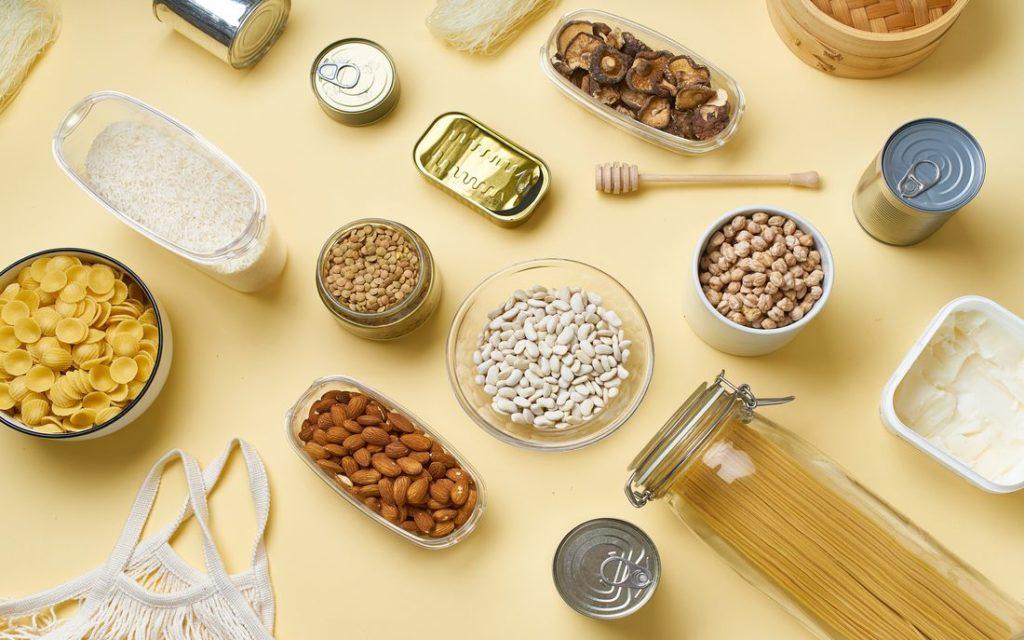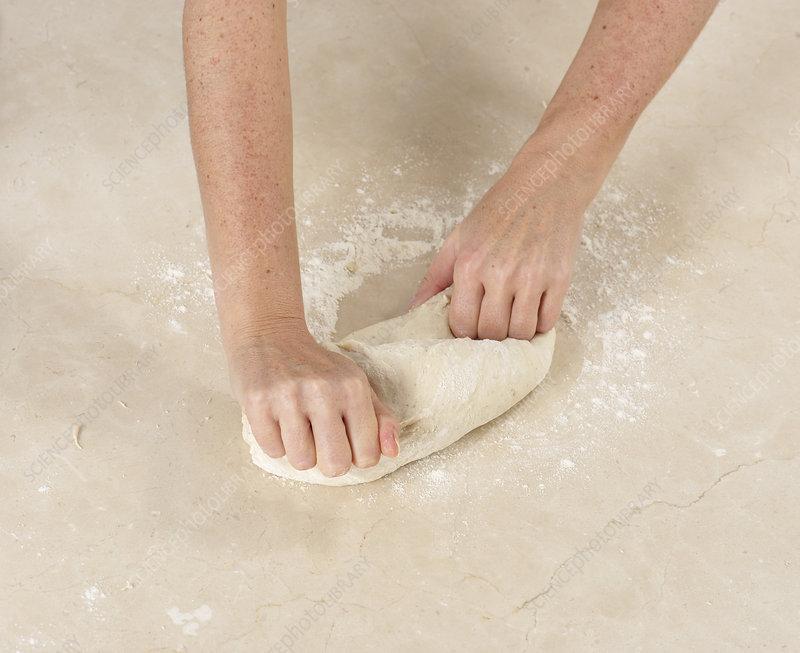The aroma of freshly baked bread wafting through the air is a sensory experience that captivates the heart and soul. Among the diverse array of breads,the French baguette stands out as a symbol of culinary artistry and tradition. With its golden crust, airy crumb, and delightful chew, this iconic staple is more than just a loaf; it’s a testament to the patience and skill of the baker. In this step-by-step guide,we will explore the art of crafting the ideal French baguette,demystifying the techniques and ingredients that go into this beloved creation. Whether you’re a novice kitchen enthusiast or an experienced baker seeking to refine your skills, prepare to embark on a journey that celebrates simplicity and excellence in bread-making. Let’s roll up our sleeves, gather our tools, and bring a taste of France to our own kitchens.
Understanding the Essential Ingredients for Perfect Baguette Dough
To achieve a delightful baguette, the choice of ingredients plays a crucial role. First and foremost, flour is your foundation; opting for bread flour with a higher protein content (around 11-13%) contributes to the dough’s elasticity and structure. Together with the flour, the water you select must be clean and free of impurities, making up about 60-65% of your dough weight. Don’t forget about salt—often underappreciated—this ingredient not only enhances flavor but also strengthens gluten. Last but not least, your yeast—whether fresh or dry—awakens the dough and promotes the fermentation process that gives baguettes their characteristically airy crumb. Each of these components comes together in a harmonious dance, ready to create culinary magic.
Another essential aspect to consider is the importance of temperature in the dough-making process. Ideal dough temperature—around 75°F (24°C)—ensures yeast activity, affecting the final rise and flavor profile. Additionally, experimenting with sourdough starter can elevate the complexity of your baguette, imparting a tangy taste that’s hard to resist. As you mix and knead your ingredients, gravitational forces of flour and water mix together into a gluten network, vital for holding gases released during fermentation. To clarify the connections between these ingredients, here’s a concise table outlining their core roles:
| Ingredient | function |
|---|---|
| Flour | Provides structure and elasticity |
| Water | Hydrates ingredients and activates yeast |
| Salt | Enhances flavor and strengthens gluten |
| Yeast | Promotes fermentation and leavening |

Mastering the Art of Kneading and Shaping Your Baguette
Once your dough has beautifully risen, its time to embrace the tactile pleasure of kneading and shaping, essential steps in crafting the perfect baguette. Start by gently deflating your dough on a lightly floured surface. Use your palms and fingers to stretch and fold the dough, engaging your whole body to push it down while keeping a gentle touch. Kneading should feel like a rhythmic dance; you want to develop the gluten without overworking the dough. Aim for about 10 minutes of kneading to achieve a smooth, elastic texture. Remember, the dough will become more forgiving as it warms, and its resistance will decrease, allowing you to shape it with ease.
When it comes to shaping your baguette, the process is as much an art as it is indeed a science.Begin by dividing your dough into equal portions, each weighing around 250 grams. Form each piece into a rough rectangle, then follow these steps for shaping:
- Flatten the dough gently with your palms.
- Fold the top third down, and then the bottom third up to create a sealed envelope.
- Flip the dough seam-side down and roll it to elongate, keeping the ends tapered for that iconic baguette shape.
Consider the following tips to ensure your baguettes achieve that coveted artisan look:
| Tip | Reason |
|---|---|
| Pre-shape the dough | Helps relax gluten before final shaping. |
| Use a couche | Supports the shape during the final rise. |
| Score before baking | Allows the dough to expand while baking. |

Achieving the Perfect Crust: Techniques for Baking success
To achieve that delightful crunch characteristic of a French baguette, pay close attention to your dough’s hydration level. A typical baguette dough should have a moisture content of around 70%, wich means for every 100 grams of flour, you’ll want 70 grams of water. This high hydration not only contributes to a lighter crumb structure but also allows for better steam retention during baking, resulting in a beautifully crispy crust. When preparing the dough, consider the following techniques:
- Autolyse: Mix the flour and water and let it rest for about 30 minutes before adding salt and yeast. this enhances gluten advancement.
- Stretch and Fold: instead of kneading, use the stretch and fold technique during the first rise.This helps build strength while incorporating air into the dough.
- Cold Fermentation: Letting the dough rest in the fridge overnight increases flavor complexity and improves texture.
As you prepare for baking, the right oven settings are crucial to achieving that perfect crust.A preheated oven with steam created during the first few minutes of baking ensures a crispy exterior while keeping the interior moist. To facilitate this, you can:
- Use a Baking Stone: It retains and radiates heat evenly, making it ideal for baking bread.
- Create Steam: introduce steam by placing a pan of hot water or ice cubes in the oven during the initial bake.
- score the Dough: Just before baking, make slashes on the surface.This controls the expansion of the bread and contributes to the crust’s stunning texture.

Tips for Storing and Serving Your Homemade Baguette
Once your baguette has cooled to room temperature, proper storage is essential to maintain its texture and flavor. To keep your homemade baguette fresh, consider wrapping it in a clean kitchen towel or placing it in a bread bag made of breathable material. This method helps preserve the crust’s crispy texture while preventing the interior from drying out. Avoid plastic bags, as they trap moisture and can lead to a soggy crust. For longer storage,consider slicing the baguette and freezing it in an airtight container,allowing you to enjoy a taste of homemade goodness whenever the craving strikes.
When it comes to serving your perfect baguette, presentation is key. Slice your baguette just before serving to keep the interior soft and the crust crunchy.Pair with a selection of cheeses, charcuterie, or spreads to enhance the dining experience. To elevate your serving, consider using a wooden board or stylish platter, and garnish with fresh herbs or olives for a rustic touch. Here are some tasty pairing suggestions that can elevate the taste of your fresh baguette:
| Pairing | Description |
|---|---|
| Brie Cheese | Soft and creamy with a mild flavor. |
| Prosciutto | Salty and savory, pairs perfectly with fresh baguette. |
| Tapenade | Rich olive spread that adds depth to the bread. |
| Honey and Goat Cheese | A sweet and tangy combination that delights the palate. |
To Conclude
mastering the art of crafting the perfect French baguette is a journey through time, tradition, and technique. With each step carefully laid out, from selecting high-quality ingredients to the final score on the crust, you now have the tools to create this iconic loaf in your own kitchen. Remember that while precision is crucial, a touch of creativity is what truly makes your baguette unique. Embrace the process, allow yourself to learn from any mishaps along the way, and relish the fragrant reward of your efforts. So, roll up your sleeves, preheat that oven, and let the warm, golden aroma of freshly baked baguette fill your home. Bon appétit!